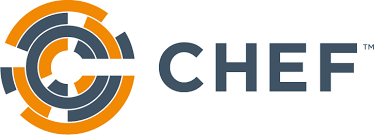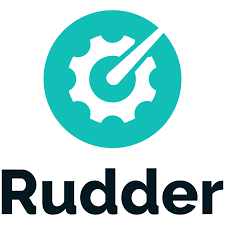Puppet’s been a staple in DevOps for a while now, especially for teams that need strong, centralized control. But let’s be honest – not every project needs that much complexity. These days, there are plenty of tools out there that let you handle configuration, provisioning, and automation without the learning curve or heavy setup. Some of them go all-in on declarative infrastructure-as-code, while others make life easier with agentless setups or cloud-native support.
Below, we’ll walk through some of the best alternatives to Puppet. Each one brings something a little different to the table, whether you’re after lighter workflows, more flexibility, or just want to automate without all the overhead.

1. AppFirst
AppFirst is for dev teams who’d rather focus on shipping features than wrestling with infrastructure code. Instead of writing out Terraform configs or tweaking YAML files, you just describe what your app needs and AppFirst handles the rest. It’ll spin up the right resources, manage dependencies, and keep everything wired up behind the scenes. It’s ideal for teams that don’t have a dedicated ops crew but still want to stay in control.
The platform plays nicely with AWS, Azure, and GCP, and you can run it as a SaaS or host it yourself. It also takes care of security and cost visibility out of the box, which is helpful if you’re juggling multiple environments. Built-in monitoring and audit tools help keep everything compliant and traceable without piling on extra tools. All in all, it’s a hands-off option for teams that want to move fast without breaking stuff.
Wichtigste Highlights:
- Automatic infrastructure provisioning on AWS, Azure, and GCP
- Built-in logging, monitoring, and audit features
- Clear cost visibility by app and environment
- Available as SaaS or self-hosted
- Security policies baked in from the start
Für wen es am besten geeignet ist:
- Developers who don’t want to deal with infra code
- Startups or small teams moving quickly
- Multi-cloud users who need centralized visibility
- Teams that care about compliance but don’t want to babysit it
Kontaktinformationen:
- Website: www.appfirst.dev

2. Chef
Chef is one of those tools that’s been around the block. It gives you a way to automate infrastructure and app delivery using a policy-as-code model, which basically means you write rules for how your systems should be set up and then let Chef enforce them. It works whether you’re running stuff in the cloud, on-prem, or a mix of both, and it supports both agent-based and agentless approaches depending on how hands-on or lightweight you want to be.
What makes Chef handy is how much it packs into one place. You can manage configurations, automate common workflows, run compliance checks, and generally keep things consistent without jumping between tools. It also plays well with hybrid environments and lets you use a mix of visual interfaces and code, so different team members can get involved without needing to be experts. If you’ve got a big setup to manage and need something solid, Chef might be worth a look.
Wichtigste Highlights:
- Policy-as-code for enforcing infrastructure and compliance rules
- Centralized workflow automation and environment control
- Supports both agentless and agent-based automation
- Works across on-prem, cloud, and hybrid systems
- Built-in compliance auditing and reporting tools
Für wen es am besten geeignet ist:
- Enterprises running complex, mixed environments
- Teams juggling large DevOps pipelines
- Organizations with strict audit and compliance needs
- IT departments that want a single place to manage infrastructure
Kontaktinformationen:
- Website: www.chef.io
- Facebook: www.facebook.com/getchefdotcom
- Twitter: x.com/chef
- LinkedIn: www.linkedin.com/company/chef-software
- Instagram: www.instagram.com/chef_software
- Address: 15 Wayside Rd, Suite 400 Burlington, MA 01803
- Phone: 1-800-477-6473
3. Ansible
Ansible is kind of the go-to choice when people want automation without a lot of overhead. It’s open source, runs agentless, and uses simple YAML files called playbooks that pretty much read like plain English. That makes it a favorite for teams who don’t want to install anything extra on their servers or deal with complicated scripting. If you’ve got SSH access, you’re good to go.
Red Hat’s Ansible Automation Platform builds on top of the open-source version with more enterprise features like event-driven automation, security policies, and role-based access. You also get access to Ansible Galaxy, which is like a giant toolbox of prebuilt roles and templates. It’s great for automating across cloud platforms, containers, and apps, especially if you’re trying to centralize workflows without diving deep into custom code.
Wichtigste Highlights:
- Agentless setup using easy-to-read YAML playbooks
- Event-driven automation and policy controls
- Prebuilt roles and collections from Ansible Galaxy
- Handles provisioning, orchestration, and configuration
- Works with Kubernetes, OpenShift, and multi-cloud setups
Für wen es am besten geeignet ist:
- Teams that want simple, agentless automation
- Organizations running hybrid or multi-cloud environments
- Developers who prefer readable, no-fuss scripting
- IT departments looking to scale automation without a steep learning curve
Kontaktinformationen:
- Website: www.redhat.com

4. Salt Project
Salt is one of those tools built for teams juggling a lot of moving parts. It’s open source, built with Python, and can manage everything from servers and VMs to network gear. What sets it apart is the event-driven setup – you can define triggers so systems respond automatically to things like config changes, errors, or outages. That kind of self-healing behavior is especially useful when you’re managing a big, complex environment.
It’s also flexible. Salt works well across different operating systems, and you can extend it with modules and plugins to fit your exact setup. Even though it’s backed by Broadcom through VMware’s Tanzu Salt now, the community behind it is still active and strong. If you’re looking for something open, powerful, and not overly tied to a single cloud provider, Salt’s definitely worth checking out.
Wichtigste Highlights:
- Python-based automation with event-driven architecture
- Manages config and orchestration across servers, VMs, and networks
- Automatically detects and fixes drift
- Easily extendable with plugins and custom modules
- Backed by a strong open-source community
Für wen es am besten geeignet ist:
- Teams running large or hybrid infrastructure setups
- Admins who want deep control with open-source flexibility
- Organizations focused on policy enforcement and auto-remediation
- Developers contributing to or customizing automation tools
Kontaktinformationen:
- Website: saltproject.io
- Facebook: www.facebook.com/SaltProjectOSS
- Twitter: x.com/Salt_Project_OS
- LinkedIn: www.linkedin.com/company/saltproject
- Instagram: www.instagram.com/saltproject_oss

5. Pulumi
Pulumi takes a bit of a different route compared to traditional infrastructure-as-code tools. Instead of writing configuration in YAML or HCL, you use actual programming languages like Python, Go, TypeScript, or C#. So if your team’s more comfortable writing code than managing templates, Pulumi’s a pretty natural fit. It lets you use things like loops and conditionals to build reusable infrastructure components, which can save time and headaches when things get complex.
The platform isn’t just for provisioning either. It comes with built-in tools for secrets management, policy enforcement, and even some AI-assisted features through Pulumi Neo. It works across all the major clouds and hybrid environments, and it’s flexible enough for both open-source projects and enterprise-scale setups. Basically, if you want to treat infrastructure like software and work with the tools your dev team already knows, Pulumi makes that possible.
Wichtigste Highlights:
- Write infrastructure using real programming languages
- Supports AWS, Azure, GCP, and hybrid setups
- Built-in support for secrets and policy management
- AI-assisted automation with Pulumi Neo
- Open-source core with enterprise-grade features available
Für wen es am besten geeignet ist:
- Dev teams comfortable with Python, Go, TypeScript, etc.
- Organizations running multi-cloud or hybrid environments
- Engineers building reusable, code-heavy infrastructure setups
- Teams that want smarter, code-driven provisioning and governance
Kontaktinformationen:
- Website: www.pulumi.com
- Twitter: x.com/pulumicorp
- LinkedIn: www.linkedin.com/company/pulumi
- Address: 601 Union St., Suite 1415 Seattle, WA 98101

6. Otter
Otter, from Inedo, is kind of a sweet spot for teams that need automation but don’t want to dive deep into code. It uses a low-code approach for orchestration and config management, so you can set up your infrastructure workflows without getting lost in scripting. One of its standout features is how it handles config drift – you tell Otter how things should look, and it keeps everything in line automatically. If something goes off track, it fixes it.
What’s nice is that it works for both technical folks and those who aren’t super hands-on with code. You can build visual interfaces for scripts, so anyone on the team can run tasks without breaking things. It also fits well into CI/CD pipelines, which helps bring modern deployment practices into infrastructure management. Whether you’re running on-prem or in the cloud, Otter gives you a structured way to keep your systems in check without overcomplicating the process.
Wichtigste Highlights:
- Low-code setup for config and orchestration
- Automatically detects and fixes config drift
- Supports infrastructure changes through CI/CD
- Custom visual interfaces for running complex scripts
- Designed for both devs and non-devs to use
Für wen es am besten geeignet ist:
- Teams bringing CI/CD into infrastructure workflows
- Mixed-skill teams that need easy automation tools
- Admins who want visual control over server states
- IT groups managing lots of servers without deep scripting
Kontaktinformationen:
- Website: inedo.com
- Twitter: x.com/inedo
- LinkedIn: www.linkedin.com/company/inedo
- Address: 56 Front St. Upper Berea, OH 44017 United States

7. AttuneOps
AttuneOps is all about giving sysadmins a way to automate without needing to install agents everywhere. It connects directly to Windows, Linux, and macOS servers using standard protocols like SSH and WinRM, so it keeps things lightweight. You can write and run scripts in languages like Bash, PowerShell, or Python, and the platform helps you coordinate those across all your systems in real time.
One cool thing is that you can pause a job, fix something, then pick up where you left off – no need to rerun a whole process if something small goes wrong. It also includes a self-service portal so other teams can safely kick off approved tasks without bugging the ops team every time. AttuneOps supports full-stack automation and even integrates with things like VMware and Dell iDRAC for hardware provisioning. It’s a solid fit for teams that want more control without having to rely on complex IaC setups.
Wichtigste Highlights:
- Agentless orchestration using SSH and WinRM
- Works with Bash, PowerShell, Python, and more
- Pause, debug, and resume automation tasks
- Self-service portal for non-admin teams
- Built-in scheduling and config drift detection
Für wen es am besten geeignet ist:
- Sysadmins managing mixed Windows and Linux environments
- Teams that rely on scripts more than declarative templates
- Organizations automating server builds and maintenance
- Anyone needing easy logging, scheduling, and job tracking
Kontaktinformationen:
- Website: attuneops.io
- Twitter: x.com/AttuneOps
- LinkedIn: www.linkedin.com/company/AttuneOps

8. Spacelift
Spacelift is built for teams doing infrastructure-as-code at scale, especially if you’re already using tools like Terraform, OpenTofu, or Ansible. It doesn’t replace those tools – it works alongside them, adding guardrails, automation, and governance features so your workflows don’t get messy as things grow. Think of it as a control layer that keeps your provisioning, config, and compliance processes all in sync.
It’s got support for both SaaS and self-hosted deployments, which is helpful if your company has strict data or compliance needs. You can create self-service workflows so devs can provision stuff on their own while platform teams keep an eye on everything through policies and automated checks. If you’re looking to clean up scattered IaC scripts and get everyone on the same page, Spacelift makes that a lot easier.
Wichtigste Highlights:
- Works with Terraform, OpenTofu, Ansible, and similar tools
- Centralized automation and drift detection
- Self-service provisioning with built-in policies
- SaaS and on-prem deployment options
- Built-in compliance and governance features
Für wen es am besten geeignet ist:
- Platform teams juggling large IaC environments
- Orgs switching over from Terraform or Puppet setups
- DevOps groups combining provisioning and configuration
- Teams that need audit-ready automation with clear controls
Kontaktinformationen:
- Website: spacelift.io
- E-mail: info@spacelift.io
- Facebook: www.facebook.com/spaceliftio
- Twitter: x.com/spaceliftio
- LinkedIn: www.linkedin.com/company/spacelift-io
- Address: 541 Jefferson Ave. Suite 100 Redwood City CA 94063
9. Terraform
Terraform’s probably the first name that comes up when people talk about infrastructure-as-code. Built by HashiCorp, it lets you define your infrastructure setup in code, then deploy it consistently across cloud providers like AWS, Azure, and GCP. The big draw is its declarative approach – you describe the end state, and Terraform figures out how to get there.
It’s great for managing both the nitty-gritty stuff like compute and networking, and higher-level services like DNS or cloud storage. The workflow is simple: write the config, plan the changes, then apply. It tracks everything using versioned state files, so you know what’s been done and what’s about to change. And if you need extras like team collaboration or policy enforcement, there’s HCP Terraform for that. It’s a solid choice if you want to standardize infrastructure and reduce surprises across environments.
Wichtigste Highlights:
- Declarative IaC using HashiCorp Configuration Language (HCL)
- Works across cloud and on-prem platforms
- Supports both low-level resources and high-level services
- Modular structure with version control
- Optional enterprise tools for team collaboration and governance
Für wen es am besten geeignet ist:
- DevOps teams managing multi-cloud or hybrid setups
- Companies that want clear, versioned provisioning workflows
- Teams looking to standardize infrastructure deployment
- Developers who need predictable, auditable environments
Kontaktinformationen:
- Website: www.hashicorp.com
- E-mail: support@hashicorp.com
- Facebook: www.facebook.com/HashiCorp
- Twitter: x.com/hashicorp
- LinkedIn: www.linkedin.com/company/hashicorp

10. OpenTofu
OpenTofu is basically what happened when the community decided they wanted a fully open-source alternative to Terraform – and meant it. It’s run under the Linux Foundation and works as a drop-in replacement for Terraform, so you don’t have to toss out everything you’ve already built. If you’re used to HCL and Terraform workflows, switching over is a pretty smooth experience.
But OpenTofu isn’t just a clone. It adds some useful features, like encrypting state files, skipping specific resources during changes, and handling multi-region or multi-account setups with more flexibility. The goal is to keep infrastructure automation transparent and community-driven, with no strings attached. If your team wants the Terraform experience without the licensing drama or vendor lock-in, OpenTofu’s a strong option.
Wichtigste Highlights:
- 100% open-source and governed by the Linux Foundation
- Compatible with existing Terraform configs and providers
- Supports secure state file encryption
- Allows selective resource exclusion with -exclude
- Handles multi-region, multi-cloud deployments
Für wen es am besten geeignet ist:
- Teams who want to break away from Terraform’s licensing model
- Organizations running complex cloud setups
- Devs maintaining IaC who want more flexibility
- Anyone looking for community-driven tooling with long-term transparency
Kontaktinformationen:
- Website: opentofu.org
- Twitter: x.com/opentofuorg

11. CFEngine
CFEngine’s been around for a while, and it’s all about keeping systems in a known, secure state with as little fuss as possible. It runs lightweight agents on your nodes, constantly checking for drift and fixing it if anything goes off track. It’s especially handy if you’re managing tons of servers and need something fast, consistent, and low on resource usage.
You can use it in both open-source and enterprise flavors, and it works across Linux, Windows, and hybrid environments. It’s got features for patching, policy enforcement, and compliance reporting, plus APIs so you can plug it into your existing workflows. If your team’s working in a big, distributed setup and needs something battle-tested to keep infrastructure solid and compliant, CFEngine can definitely hold its own.
Wichtigste Highlights:
- Lightweight agents for continuous config management
- Automated patching, compliance, and remediation
- Works with Linux, Windows, and hybrid setups
- CI/CD integration and API access for automation
- Open-source and enterprise versions available
Für wen es am besten geeignet ist:
- Enterprises managing a large, mixed infrastructure
- Teams focused on policy enforcement and security
- IT environments where performance and low overhead matter
- Organizations that need long-term stability and detailed compliance tools
Kontaktinformationen:
- Website: cfengine.com
- Twitter: x.com/cfengine
- LinkedIn: www.linkedin.com/company/northern.tech
- Address: 470 Ramona Street Palo Alto, CA 94301

12. Juju
Juju, from Canonical, takes a slightly different approach to infrastructure automation. Instead of just managing configurations, it focuses on the entire application lifecycle using what it calls “charms” – kind of like smart templates that know how to deploy, scale, and integrate software. You drop in a charm, and it handles the rest, including updates and connections to other services.
It works pretty much anywhere – clouds, Kubernetes clusters, VMs, even bare metal. Through Charmhub, you get access to a big library of pre-built charms for popular tools and platforms. There’s also JAAS (Juju as a Service) for teams that want centralized control, RBAC, and auditing built in. If you’re dealing with complex application environments and want more than just config management, Juju gives you a way to orchestrate everything in a cleaner, more repeatable way.
Wichtigste Highlights:
- Uses “charms” to manage full application lifecycles
- Works on public cloud, Kubernetes, VMs, and bare metal
- Charmhub provides ready-made operators for common tools
- JAAS offers enterprise governance, access control, and auditing
- Helps integrate apps and services without extra wiring
Für wen es am besten geeignet ist:
- Teams deploying and managing multi-cloud or hybrid applications
- Organizations moving into Kubernetes or microservice orchestration
- Devs who like reusable, pre-built automation logic
- Enterprises looking for centralized control across complex setups
Kontaktinformationen:
- Website: canonical.com
- Email: pr@canonical.com
- Facebook: www.facebook.com/ubuntulinux
- Twitter: x.com/Canonical
- LinkedIn: www.linkedin.com/company/canonical
- Instagram: www.instagram.com/ubuntu_os
- Address: 5th floor 3 More London Riverside London SE1 2AQ United Kingdom
- Phone: +44 20 8044 2036

13. Rudder
Rudder is built for teams that want a strong mix of configuration management and security compliance, all in one tool. It helps you define how your systems should be set up, then automatically enforces those policies to keep everything in line. It works across both Linux and Windows environments and supports hybrid infrastructure, so whether you’re in the cloud, on-prem, or a mix of both, Rudder has you covered.
What makes Rudder stand out is its focus on compliance. It lets you align your setups with security standards like CIS or ISO 27001, track vulnerabilities, and get real-time dashboards that show how everything is holding up. There’s also patch automation and a visual policy editor, which makes it easier for teams to set things up without having to dive deep into code. If you’re dealing with audits or just want to tighten up your infrastructure posture, Rudder makes that process a lot smoother.
Wichtigste Highlights:
- Combines configuration management with compliance automation
- Patch management and vulnerability tracking built in
- Real-time dashboards for continuous compliance visibility
- Visual policy editor with customizable templates
- Supports both Linux and Windows across hybrid setups
Für wen es am besten geeignet ist:
- IT teams focused on hardening systems and enforcing policies
- Enterprises juggling on-prem and cloud infrastructure
- Security-minded organizations dealing with audits
- Teams that want built-in reporting and easy compliance tracking
Kontaktinformationen:
- Website: www.rudder.io
- Twitter: x.com/rudderio
- LinkedIn: www.linkedin.com/company/rudderbynormation
- Address: 226 boulevard Voltaire, 75011 Paris, France
- Phone: +33 1 83 62 26 96

14. Foreman
Foreman is kind of like the Swiss Army knife for system administrators. It helps you manage the full server lifecycle – from provisioning and configuring to monitoring and updating – all from one place. Whether you’re dealing with bare-metal servers, cloud environments, or virtual machines, Foreman gives you a centralized dashboard to stay on top of it all.
One of the best things about it is how well it plays with other tools. It integrates with Puppet, Ansible, and Salt, so if you’re already using one of those for config management, you can just plug it into Foreman and expand your automation setup. It also has built-in auditing, role-based access control, and plugin support if you need extra features. For teams that want a single point of control over a diverse environment, Foreman brings everything together without forcing you to start from scratch.
Wichtigste Highlights:
- Full server lifecycle management across on-prem and cloud
- Integrates with Puppet, Ansible, and Salt
- REST API and CLI for automation and scripting
- Built-in role-based access and LDAP support
- Auditing and plugin system for extended functionality
Für wen es am besten geeignet ist:
- Admins managing both physical and virtual infrastructure
- Teams already using config tools like Puppet or Ansible
- IT departments looking to unify provisioning and monitoring
- Enterprises that need secure access control and auditing features
Kontaktinformationen:
- Website: theforeman.org

15. Bcfg2
Bcfg2 is a bit of an old-school tool, but it still has its place – especially if you care about traceability and precision. It was originally developed by Argonne National Lab, so it leans into environments where reproducibility and consistency really matter. You don’t just enforce configurations with Bcfg2 – you also validate them by comparing what’s actually running against what’s supposed to be there.
It supports a bunch of Unix-like systems, including Linux, macOS, BSD, and Solaris, and it’s good at handling environments that change frequently. If someone makes manual changes, Bcfg2 can spot the difference and help bring things back into alignment. There’s built-in reporting and visualization, which helps with troubleshooting and understanding config drift over time. For teams that prioritize insight and control over their infrastructure, it’s still a solid, lightweight option.
Wichtigste Highlights:
- Validation-based config management with reconciliation tools
- Built-in reports and visual tools for tracking drift
- Supports Linux, BSD, macOS, and Solaris
- Handles manual changes and frequent system updates gracefully
- Designed for reproducible, verifiable system states
Für wen es am besten geeignet ist:
- Sysadmins managing diverse, Unix-heavy environments
- Organizations that need strong validation and tracking
- Research labs or teams focused on reproducibility
- Setups with lots of manual tweaks and change control
Kontaktinformationen:
- Website: bcfg2.org
Schlussfolgerung
At the end of the day, picking the right Puppet alternative really comes down to what your team actually needs – not just in terms of features, but in how you like to work. Some teams want something lightweight and easy to plug in. Others need a more robust setup with built-in compliance and governance. There’s no single answer that works for everyone, and honestly, that’s kind of the point.
Whether you’re a small team looking for something agentless and straightforward, or a larger org managing infrastructure across multiple clouds, there’s something in this list that’ll fit. The good news? You’re no longer stuck with a one-size-fits-all solution. Modern infrastructure automation has gotten more flexible, more modular, and way more approachable. It’s just a matter of picking the tool that helps you move faster without making life harder.


